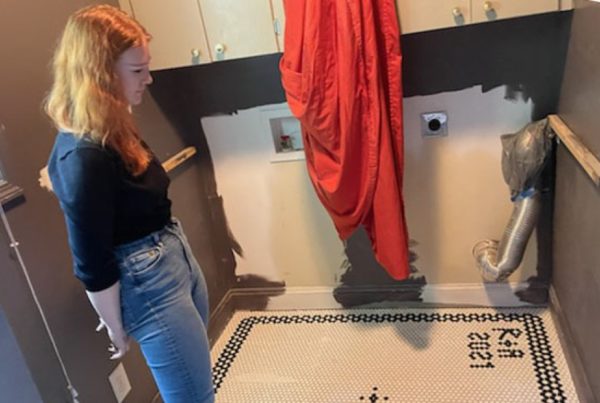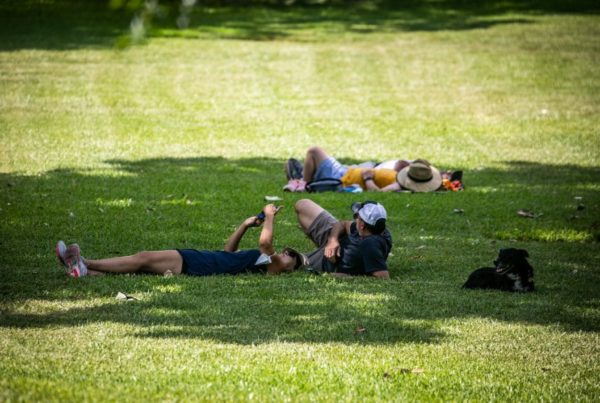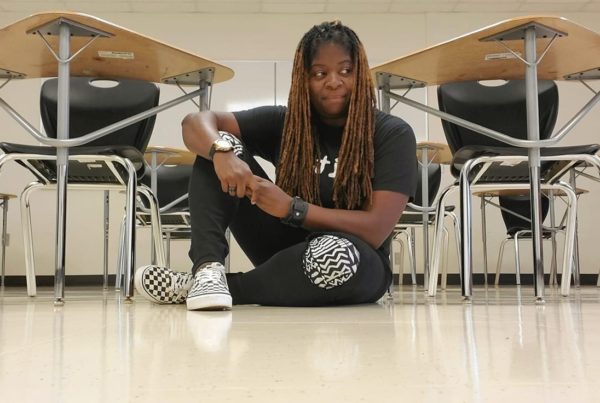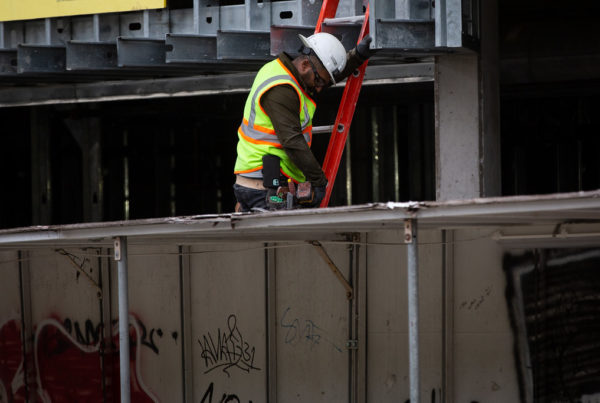From KUT:
It’s lunchtime at Campbell Elementary in East Austin. Second-grader Cedric puts his lunch box down on the table and starts unpacking it.
He has a sandwich (which he says he might not eat). Some juice. An apple.
“My dad packed me a random lemon,” Cedric says.
He says he doesn’t eat lemons.
“It’s just random.”
It’s also a little poetic, in a when-life-gives-you-lemons way. That’s because Cedric is discovering this random lemon on the school’s basketball court, where long, rectangular cafeteria tables are set up for lunch.
Over the summer, Principal Keith Moore was handed a “lemon” in the form of the delta variant. As COVID-19 cases skyrocketed in Austin, he started to plan how to keep students safe during lunch, the one time during the day when they’re not wearing their masks — making it the most dangerous time of the day.
“Our campus is situated in a way that we’re blessed,” he says. “We can offer our scholars patio dining.”
The basketball court where the tables are set up is covered by a weatherproof sun shade. It also leads directly to the hallway outside the cafeteria.
Inside the cafeteria, Moore notes how dim and empty it is.
“We’re not utilizing it for scholars to eat,” he says. “However, they do come in and they follow a clear pathway down to the serving line.”
A teacher keeps students spaced out until they get to a door that leads to the lunch line. There, a cafeteria manager, with the authority of a bouncer, allows kids in one at a time. They fill their trays then walk the short distance to a table outside.
Moore says his school’s small population — around 200 students — makes outdoor dining easier. The school has enough staff to monitor the kids and didn’t need extra tables to ensure social distancing. This allowed Moore to move the entire operation outside.
And that’s good, because Moore says the families at Campbell would likely not have extra money to donate or time to volunteer to help monitor lunch.
“For a larger campus, there are some logistical situations where you may need more tables, you may need more space,” he says.
Dependence On Parents
That’s a reality many other schools faced as the school year began. Maplewood Elementary, also in East Austin, has twice as many kids as Campbell, but Principal Vickie Jacobson also wanted to offer lunch outside.
The setup at Maplewood is different from Campbell. There’s not a large space near like a basketball court near the cafeteria, so picnic tables are spread out all over the property. That meant the school needed more adults to monitor the students.
Jacobson says Maplewood parents stepped up.

Second-graders eat lunch outside at Maplewood Elementary School in Austin. Parents in the school community bought and built many of the picnic tables.
Michael Minasi
“Their offer has been a great solution to allow our teachers to have a little bit more time for their own lunch and still have supervision for the kids,” Jacobson says as she walks by a cluster of tables.
The parents also helped build and buy more picnic tables that can stay outside.
“The ones that have been stained are the newer ones that the parents built,” she says, pointing to a dark-brown wooden picnic table. “All of these tables, about half of them, have been added by the parents in the last two weeks.”
That’s the tricky part about providing outdoor lunch. It makes the most sense in terms of minimizing the risk of spreading the coronavirus. But it’s logistically difficult. Not every school community has the resources Maplewood does to fill the gaps.
Obstacles To Outdoor Lunch
Summitt Elementary in North Austin is one of them. The school has 700 students who must eat lunch in three hours. The school is three times as big as Campbell and almost double the size of Maplewood. Principal Ariel Greco says at this point it is not providing outdoor lunch — even though many families requested it.
“One of the obstacles that we face is because our cafeteria is not situated close to our outdoor space,” she says. “It’s little kids walking with their trays with the potential to drop them, so then [staff having] to go walk them back or help clean up and get a new tray.”
Greco says it’s a priority for her to give teachers a lunch break, which means she wouldn’t have enough staff to monitor the students if they were all spread out across the school’s property. And while some families are requesting their children eat outside, others don’t want that.
“So [we’re] trying to navigate both,” she said. “That’s why we’re still talking about outdoor lunch and some possibilities. It was just me not being able to commit to Day 1 outdoor lunch plans. That doesn’t mean we won’t get there and then figure out how we can get there, to address all the nuances of that.”
Instead, students eat in the cafeteria.
Unlike at Maplewood and Campbell, where students can sit by friends outside and essentially behave normally, Summitt students have a lot of restrictions.
“We have the accordion style plexiglass for every single table,” Greco says. “And we have two to three tables per class, sometimes four, depending on the size of the table, to ensure students are sitting at least every other seat.”
Students aren’t allowed to get up and move around, so a lunch monitor gets them napkins or forks or anything else they need once they are seated.
Like a lot of changes that came with the pandemic, the students are used to it. They happily eat their lunch and put their masks on when it’s time to leave.
All the principals said they might adjust their lunch setups as the year goes on and the COVID-19 risks change. Meantime, the Austin Ed Fund, AISD’s foundation, is raising money to help schools buy picnic tables and other supplies if they’re trying to move lunch outside.
Got a tip? Email Claire McInerny at claire@kut.org. Follow her on Twitter @ClaireMcInerny.














